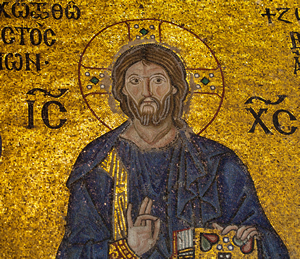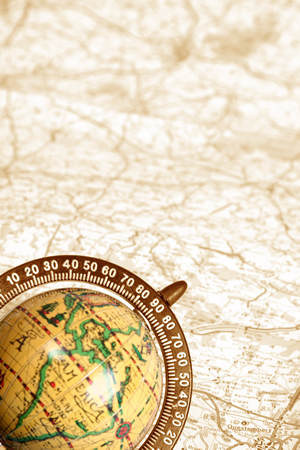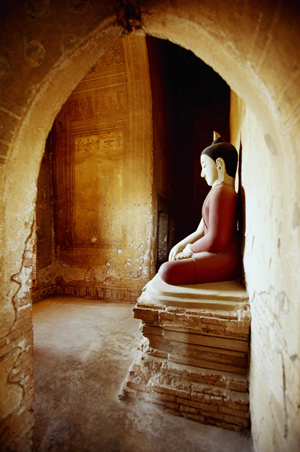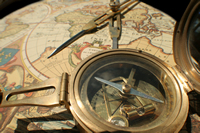World History: Course Syllabus
Course Code: SSW4010T
Welcome to the DoDEA Virtual High School. Thank you for visiting our course catalog. Please navigate through the syllabus below to find out more information about this DVHS online course. If you have questions, please contact us at your earliest convenience.
 Course Description
Course Description
This course is a survey of world history from prehistoric to contemporary times. Students will learn about the socio-economic, political, and ideological conditions of various time periods as they study historical events and cultural achievements of world regions.
Using primary and secondary sources, students will use critical thinking and problem-solving skills to conduct inquiry-based research, participate in interactive discussions, and complete assignments establishing real-world connections.
Image: Byzantine mosaic; Thinkstock.com
Course Objectives
Throughout the course, students will
- Identify how and why people, goods, and ideas migrated throughout global history.
- Explain how the geography of a region impacted the growth and development of a civilization.
- Identify social, political, economic, and ideological conditions of major eras in world history.
- Describe the structure of society and family in historical cultures based on societal factors.
- Interpret and analyze statistics and data from maps, charts, and graphs.
- Summarize the achievements of civilizations, particularly in the fields of science, technology, and the arts, and how they spread through cultural diffusion.
- Compare and contrast the development and beliefs of the major world religions and philosophical traditions, and explain how they spread to other regions.
- Summarize the characteristics of early political systems and their influence on modern-day governments.
- Discuss the impact of European imperialism and colonization, and defend the connection between revolution and reform.
- Identify the effect of industrialization and urbanization on the global economy.
- Articulate the relationship between historical occurrences and contemporary situations.
- Predict how contemporary issues will affect future generations, based on historical evidence.
DoDEA World History Standards may be viewed by clicking the link.
Image: An old globe on map; Thinkstock.com
 Course Outline:
Course Outline:
Students will be introduced to the following:
The Dawn of Civilization: Prehistory–AD 300
- Section 1 - The Dawn of Civilization: Introduction
- Section 2 - The Beginnings of Civilization
- Section 3 - The Ancient Near East
- Section 4 - Nile Civilizations
- Section 5 - Ancient India and China
- Section 6 - Exam Preparation
The Growth of Civilizations: 2100 BC–AD 1500
- Section 1 - The Growth of Civilizations: Introduction
- Section 2 - Classical Greece
- Section 3 - Rome and Early Christianity
- Section 4 - The Americas
- Section 5 - Empires of China and India
- Section 6 - Exam Preparation
Medieval Civilizations: 100–1500
- Section 1 - Medieval Civilizations: Introduction
- Section 2 - Muslim Civilizations
- Section 3 - African Kingdoms
- Section 4 - Cultures of East Asia
- Section 5 - Kingdoms, Christianity, and the Middle Ages in Europe
- Section 6 - Exam Preparation
Semester 1 Exam
Image: Gubyaukgyi Temple, Bagan, Myanmar; Thinkstock.com
 Textbook
Textbook
World History The Modern America, 2010
Publisher: Pearson-Prentice Hall
ISBN: 0-13-365192-4

